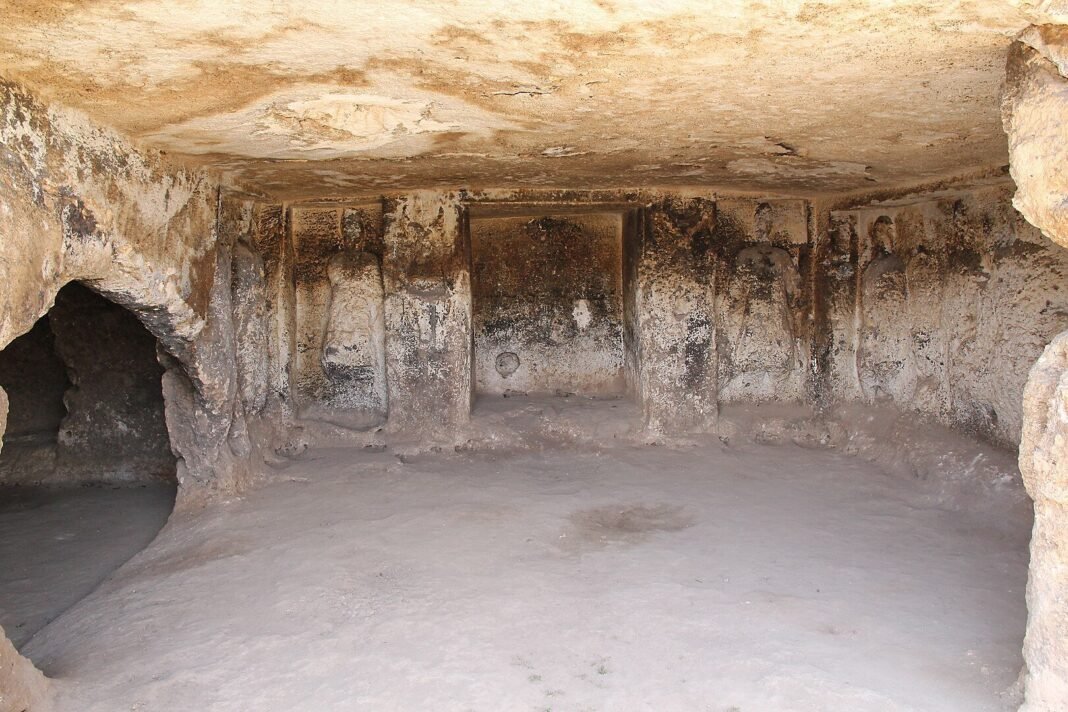
Archaeologists have uncovered a 3,000-year-old structure at the ancient site of Sogmatar in southeastern Turkey, shedding new light on the region’s celestial and religious past. The discovery reveals what experts describe as a rare example of an Iron Age complex likely tied to both civic life and sky-worship traditions — a strong indication that Sogmatar once served as a kind of cosmic sanctuary.
The building, found near the village of Yağmurlu in Şanlıurfa’s Eyyübiye district, consists of seven adjoining rooms with walls up to two meters (6.6 feet) high and one meter (3.3 feet) thick.
Dr. Süheyla İrem Mutlu, who leads the excavation in coordination with the Şanlıurfa Museum under Celal Uludağ, said early evidence points to the Neo-Assyrian period in the first millennium BCE. According to her, the site likely played a dual role — both administrative and ceremonial — integrated into broader lunar cult practices.
Sogmatar has long been linked to ancient astral worship. Known for its rock-cut tombs and religious reliefs, including depictions of the moon and sun, the site was thought to be a sacred necropolis.
📍 Şanlıurfa’daki Soğmatar Antik Kenti’nde yaklaşık 3000 yıl öncesine tarihlenen kamusal yapı ortaya çıkarıldı.
Kazılar Geleceğe Miras Projesi kapsamında Şanlıurfa Müze Müdürü Celal Uludağ’ın başkanlığında Harran Üniversitesi Arkeoloji Bölümü’nden Süheyla İrem Mutlu’nun… pic.twitter.com/B36NHhr5xy
— arkeolojihaber ® (@arkeolojihaber) October 13, 2025
However, the recent discovery changes that narrative. Dr. Mutlu explained that this building suggests a more complex layout — combining ritual, civic, and funerary purposes in a single urban plan.
Necropolis and lunar network connections
Excavations have also uncovered 83 rock-carved tombs across the site’s necropolis, dating from the Early Bronze Age to the Roman period.
These tombs range from simple vertical shafts dating back to around 2400 BCE to more elaborate Roman-style chambers with staircases. The continuity of use over millennia underscores the site’s lasting sacred significance.
Adding to its importance is Sogmatar’s alignment with Harran, one of Mesopotamia’s most enduring religious centers. Harran’s temple to the moon god Sin was active for centuries and supported by rulers like Shalmaneser III and Ashurbanipal. While Harran was grand in scale, researchers believe Sogmatar functioned as a smaller, regional extension of its lunar network.
One theory, presented by historian Theodor Hary, suggests Sogmatar was designed as an open-air observatory in the first or second century CE. The alignment of reliefs and structures with planetary positions points to a deliberate attempt to mirror the night sky as seen from Harran.
Central to the site is Pognon Cave, a space dedicated to the worship of the moon god Sin, and a nearby hill known as Kutsal Tepe (Sacred Hill), where inscriptions and celestial carvings remain etched into the landscape — further anchoring Sogmatar’s role as a cosmic sanctuary rooted in sky-worship and ancient science.

